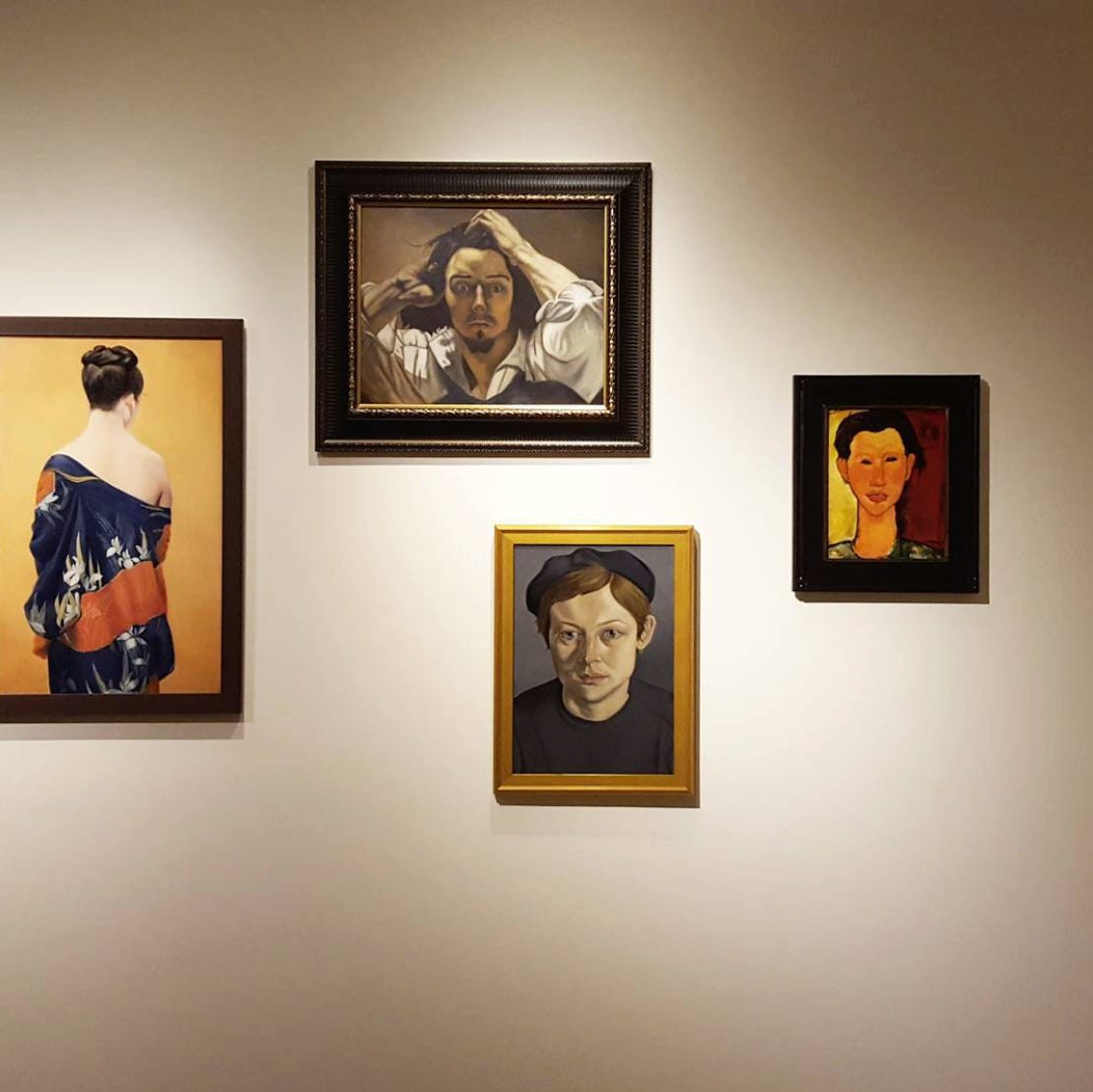
Forge a Painting
Five Mona Lisa paintings stared at me when I got off the elevator.
I cocked my head to one side, squinted, and questioned which one was real. But felt a little dumb realizing none of them were - I saw the original one in Paris a few years earlier.
I walked around the lobby and stared back into each pair of eyes. I noticed subtle differences between each Mona Lisa: some eyes were further apart than others. Skin tones varied in color, leaning more green or more pink. The brushstrokes on some paintings were expressive and visible, while others blended and disappeared. All these little quirks made it clear to me that each Mona Lisa was painted from a different hand. They were all forgeries.
Art Roster is the group of Mount Shasta based-artists who painted these Mona Lisas. They forged other paintings too, from artists like Vermeer, Rembrandt, and Hopper. By forging the masters, they learned to paint like the masters. As a self-taught artist newbie, visiting this art show seemed like the perfect place to pick up some new techniques.

This brought me back to the golden days of architecture school, when I’d spend whole afternoons digging through dusty library books, looking for drawings of famous buildings to forge. Forging was a class requirement, actually. And it hid under the pseudonym of “precedent study.”
Through the act of drawing these famous buildings, I’d learn how to design buildings like master architects. I learned how to design architectural moments, like looking at farmlands through floor-to-ceiling windows while eating a $20 sandwich at the Parrish Museum’s cafe, and how big a bedroom should be to fit a queen size bed, two night stands, a dresser with a TV on it, and have enough space to walk around. I’d then incorporate these discoveries into my own projects.

Nowadays, I forge paintings.
I paint my own version of Sari Shryack’s disco balls because I want to master painting in the style of modern Impressionism. Sari’s time-lapse process videos on YouTube are mesmerizing. I watch them on repeat. Eyes glued to the screen, I study how she creates realistic depth by layering solid vibrant colors and expressive, unblended brush strokes.
After these videos are burned into my memory, I feel confident enough to replicate her process. With a disco ball photo in hand, I paint colored squares on the canvas the same way Sari did. Layer by layer, the disco ball magically comes to life.

Forgery is a great educational tool, to learn the steps it takes to make something great. I’m not saying you should try to make a quick buck off your first attempt of The Starry Night, like that time Michelangelo was in a financial bind and sold a forged Roman antiquity sculpture with acidic soil rubbed all over it to make it look like it was discovered in an archeological dig. The buyer caught on, but was so impressed with Michelangelo’s skills that he didn’t make a fuss about it. You probably won’t be as lucky.
So, are you dreaming of becoming a master artisan? Study. Replicate.
Forge a painting.
Michelangelo story source: https://news.artnet.com/art-world/michelangelo-art-forgery-742172
















